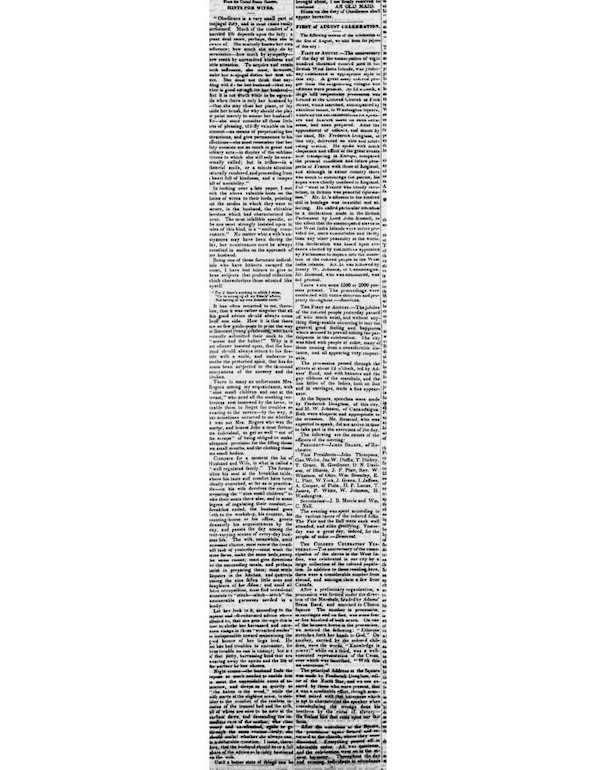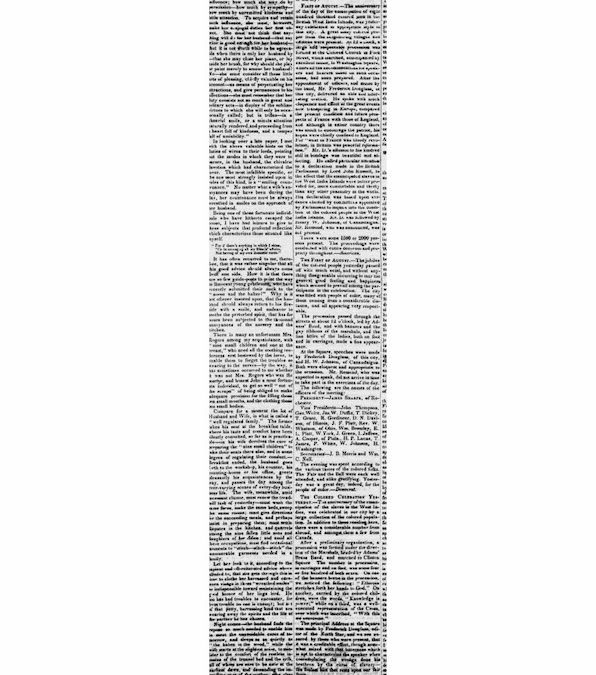Happy Convention Days!
Written by: Maria Smith
Hi all,
Those who read my last blog may remember that this weekend is Convention Days at the Women’s Rights NHP. Convention Days is an annual event that celebrates the 1848 Seneca Falls Women’s Rights Convention. This Convention is often viewed as the first women’s rights convention within the U.S. It was where suffragist Elizabeth Cady Stanton first spoke for women’s rights on a national stage. This year the celebration is virtual. The programs will continue to be available online on the National Women’s Rights NHP Facebook and YouTube pages. I highly recommend that you check out this year’s programming if you missed Convention Days weekend. In this post, I will highlight my favorite programs from Convention Days 2021. After, I will highlight another important woman from 19th Century Central New York.
Convention Days
This year, I had the privilege to edit some of the close captions for the 2021 Convention Days programming. So, I saw many of the programs before this weekend. The one program that I hadn’t seen was the performance of Marie Jenney Howe’s 1913 satire, “An Anti-Suffrage Monologue.” It aired Friday, July 16, 2021, at 2:00 p.m. EST. It was fantastic! Humor was often used by women’s rights activists to help to gain supporters. I think it probably helped them to deal with the frustrations of activist work as well. Martha Coffin Wright, one of the organizers of the 1848 Seneca Falls Women’s Rights Convention, was a satirical writer. Her poem “Hints for wives” was read at the 1848 Seneca Falls Women’s Rights Convention and was later published by Frederick Douglass. Coffin Wright critiqued the notion that wives needed to smile more in this poem. I highly encourage you to read Coffin Wright’s poem (below) and to watch the performance of Howe’s satirical monologue. Both provide glimpses to the humorous side of women’s rights activism.

Additionally, Nathan M. Richardson’s historical portrayal of Frederick Douglass is fantastic! In this year’s program, he speaks on the writers and speakers of the Suffrage Movement. He speaks to the importance of poetry within his own writing and speaking skills. Douglass was an internationally renowned speaker of his time. If you have not yet seen Richardson’s portrayal from last Convention Days, “Frederick Douglass: A Man Among Women”, I highly recommend that you view that as well. I cannot speak highly enough of Richardson’s portrayal of Douglass! For those readers who are not into typical history programs, I recommend that you attend Rozelle’s and Lange’s programs. Rozelle is a public relations professor who has researched public relations of the National Woman Suffrage Association. The use of public relations and the strategic use of media aided the suffrage movement. Dr. Lange is an historian that has researched the images used within the women’s suffrage movement. As part of the public relations strategies, the women’s suffrage movement was very particular about the photos that they released. This was a strategy that they adopted from Sojourner Truth, who used photographs of herself to change public perception of her. Both talks are highly engaging and will make you view the suffrage movement in new ways.
Lovina Latham
Only a handful of women’s rights activists gained national recognition. The majority of women’s rights activists faced the hardships of womanhood in the 19th Century without national recognition. Lovina Latham was an active women’s rights activist and an antislavery advocate for most of her adult life. Latham was married to Obediah Latham. The couple married in Connecticut and moved to Paris, New York, during the 1790s. After 1820 the couple moved to Seneca Falls, NY. The couple had 11 children together; 7 children continued to live in Seneca Falls as adults.
Unfortunately, Obediah Latham passed away in 1831. This left Latham a widow. Laws at the time left Latham without legal protections. As a result, Latham relied upon her sons to support her and her young children. The Latham sons were successful master builders; they helped to construct the New York State Capitol building. The Latham family were antislavery advocates. The Latham brothers were active members of the Free Soil Party, which fought to outlaw slavery in Western Territories. The family subscribed to The North Star; an antislavery newspaper run by Frederick Douglass. Lovina Lathem attended the 1848 Seneca Falls Women’s Rights Convention with her adult daughter Hannah. The two both signed the Declaration of Sentiments. Much of the Latham family is buried in the Restvale Cemetery, located on East Bayard Street, alongside other antislavery advocates.
Learn more about American Conservation Experience.
